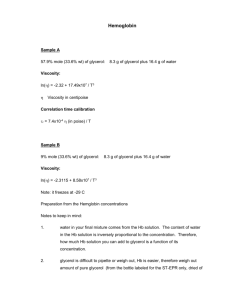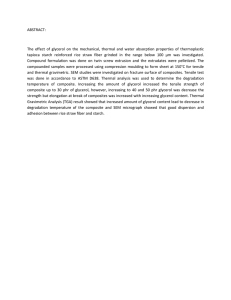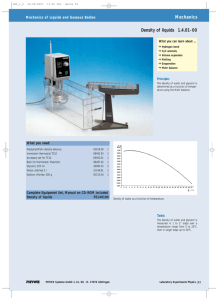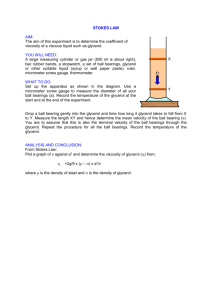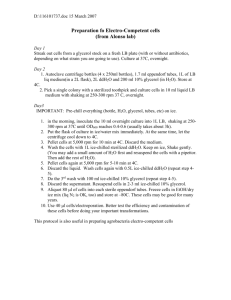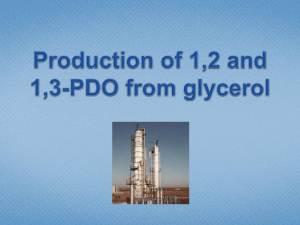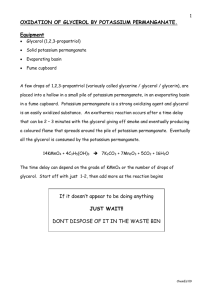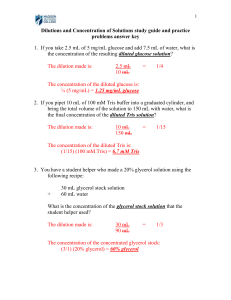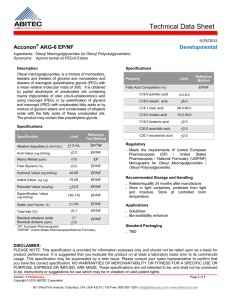Glycerol and supercritical carbon dioxide
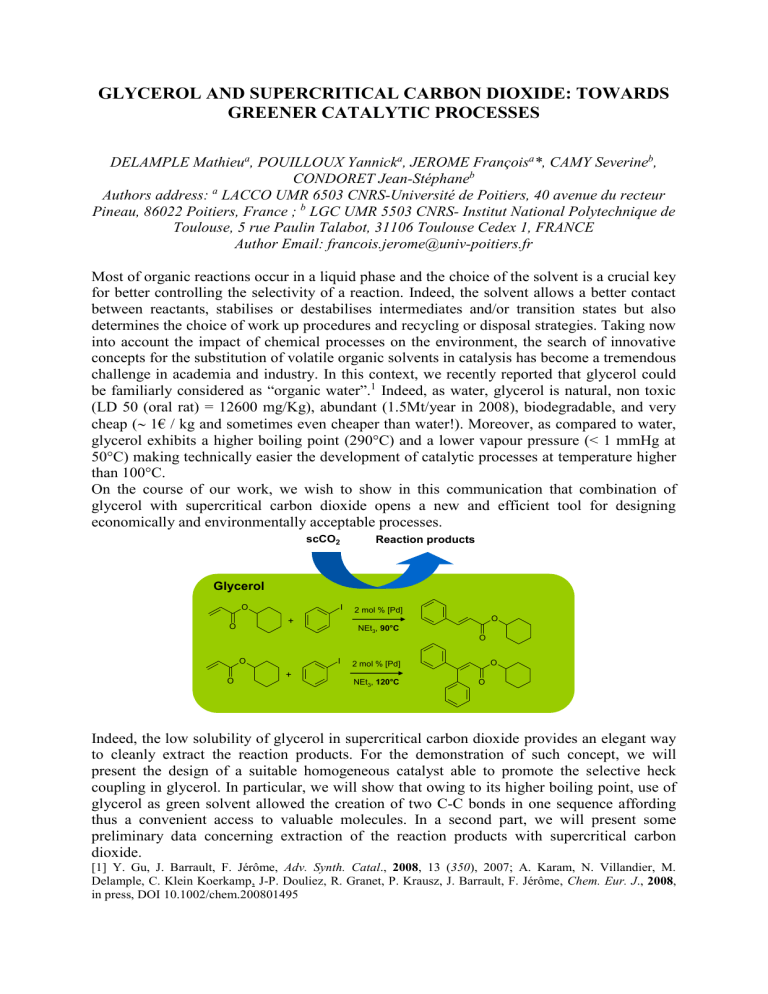
GLYCEROL AND SUPERCRITICAL CARBON DIOXIDE: TOWARDS
GREENER CATALYTIC PROCESSES
DELAMPLE Mathieu a
, POUILLOUX Yannick a , JEROME François a
*, CAMY Severine b
,
CONDORET Jean-Stéphane b
Authors address: a LACCO UMR 6503 CNRS-Université de Poitiers, 40 avenue du recteur
Pineau, 86022 Poitiers, France ; b
LGC UMR 5503 CNRSInstitut National Polytechnique de
Toulouse, 5 rue Paulin Talabot, 31106 Toulouse Cedex 1, FRANCE
Author Email: francois.jerome@univ-poitiers.fr
Most of organic reactions occur in a liquid phase and the choice of the solvent is a crucial key for better controlling the selectivity of a reaction. Indeed, the solvent allows a better contact between reactants, stabilises or destabilises intermediates and/or transition states but also determines the choice of work up procedures and recycling or disposal strategies. Taking now into account the impact of chemical processes on the environment, the search of innovative concepts for the substitution of volatile organic solvents in catalysis has become a tremendous challenge in academia and industry. In this context, we recently reported that glycerol could be familiarly considered as “organic water”.
1
Indeed, as water, glycerol is natural, non toxic
(LD 50 (oral rat) = 12600 mg/Kg), abundant (1.5Mt/year in 2008), biodegradable, and very cheap (
1€ / kg and sometimes even cheaper than water!). Moreover, as compared to water, glycerol exhibits a higher boiling point (290°C) and a lower vapour pressure (< 1 mmHg at
50°C) making technically easier the development of catalytic processes at temperature higher than 100°C.
On the course of our work, we wish to show in this communication that combination of glycerol with supercritical carbon dioxide opens a new and efficient tool for designing economically and environmentally acceptable processes. scCO
2
Reaction products
Glycerol
O
O
+
I
2 mol % [Pd]
NEt
3
, 90°C
O
O
O
O
+
I
2 mol % [Pd]
NEt
3
, 120°C O
O
Indeed, the low solubility of glycerol in supercritical carbon dioxide provides an elegant way to cleanly extract the reaction products. For the demonstration of such concept, we will present the design of a suitable homogeneous catalyst able to promote the selective heck coupling in glycerol. In particular, we will show that owing to its higher boiling point, use of glycerol as green solvent allowed the creation of two C-C bonds in one sequence affording thus a convenient access to valuable molecules. In a second part, we will present some preliminary data concerning extraction of the reaction products with supercritical carbon dioxide.
[1] Y. Gu, J. Barrault, F. Jérôme, Adv. Synth. Catal ., 2008 , 13 ( 350 ), 2007; A. Karam, N. Villandier, M.
Delample, C. Klein Koerkamp, J-P. Douliez, R. Granet, P. Krausz, J. Barrault, F. Jérôme, Chem. Eur. J ., 2008 , in press, DOI 10.1002/chem.200801495

